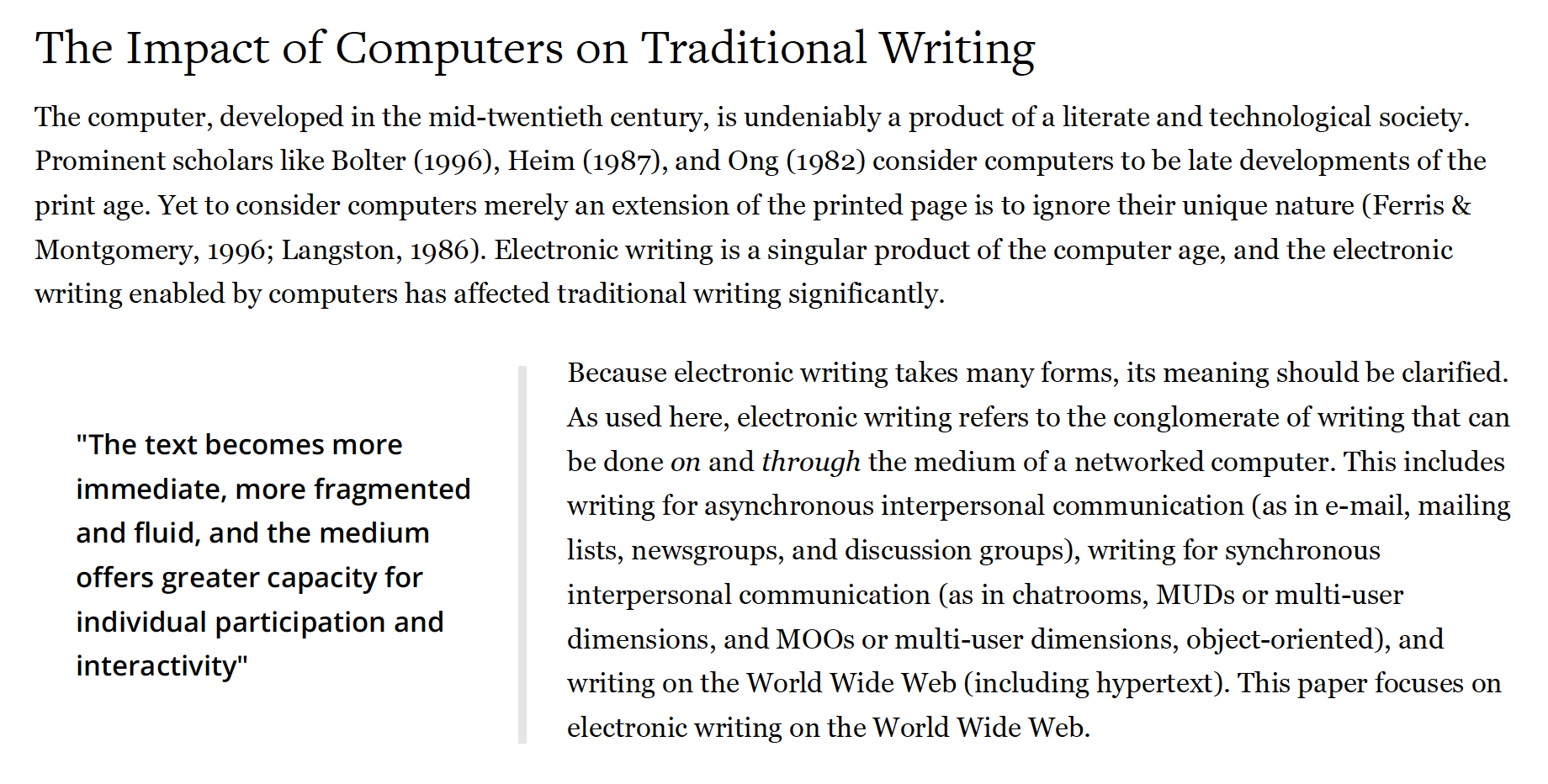Written expression differs from oral expression in that it is dependent entirely on the alphabetic word — and not on the visual and vocal elements that help people communicate in face-to-face speech. Writing requires a codifiable medium to convey meaning. Also, it uses a vocabulary, based on known conventions and rules of usage, to create new ideas. In written expression, discrete elements (the alphabet) are combined and recombined to help convey new ideas, often using new words created to meet the needs of conveying those new ideas. Finally, written language must have a fixed relationship with spoken language, so that people can communicate the same thought in two different media simultaneously — as in reading to one another. These elements give writing its characteristics of permanence and completeness. As opposed to the transience of spoken language, writing has a lasting, permanent quality about it. Written language is less redundant, more planned. Meaning and shades of meaning are conveyed by carefully chosen and placed words. Meaning may be modified by deleting, editing, and otherwise changing the written words, unlike oral language, where once words are said out loud, they cannot be unsaid, only explained. Sequentiality, like the subject-verb-object sequence in English, is important in writing; spoken language is often understood even when the structure of the sentence is fractured. In written language, the presence of the receiver is not required, and the constraints of time and space are removed. Given these factors, writing can be more analytical than oral communication.
With the mechanization of writing, the characteristics of written language were refined and expanded. The invention of print led not only to the expansion of literacy, but to the gradual development of a number of factors with profound cognitive and expressive impacts. Print concretized the permanence of writing. Until the printing press, writing was fragile, with its permanence dependent on the preservation of an often single piece of parchment or reed (Eisenstein, 1983). Print introduced durability and multiple copies, and “embedded the word in (visual) space more definitively” (Ong 1982, p. 123). It also introduced hierarchies, which in turn introduced lists and indexes. The development of print was significant in that it reinforced the linearity and sequentiality of writing while focusing on the hierarchical thinking that was essential to the eventual flowering of modern science. The permanent nature of print also led to the preservation of language. The mass dissemination of printed texts meant both fixity and standardization of content (Eisentsein, 1983).

— Sharmila Pixy Ferris, “Writing Electronically: The Effects of Computers on Traditional Writing,” Journal of Electronic Publishing Volume 8, Issue 1, 2002.
